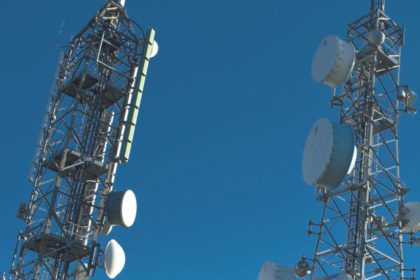
What are Microwave networks?
Microwave is a line of sight wireless communication technology that uses high frequency beams of radio waves to provide high speed wireless connections that can send and receive voice, video and data information. Microwave links are widely used for point to point communications because their small wavelength allows conveniently sized antennas to direct them in narrow beams, which can be pointed directly at the receiving antenna.
Microwave radio allows transmission of both analogue and digital data between two fixed locations; they are crucial to many forms of communication and impact a broad range of industries. Microwave radios are a cost effective solution covering long distance and with ease of deployment allowing large amounts of data to be transmitted; where other more traditional solutions such as copper or fibre may not be available.
Our solutions
Our solutions offer a high-speed point-to-point microwave link from Simoco Wireless Solutions a global leader in wireless technology.
This Full Outdoor Software Defined Radio (SDR) for 10, 11, 17, 18 and 24 GHz band has been designed for building long range links with maximum reliability even in the most challenging conditions. All relevant state-of-the-art concepts have been carefully implemented without compromise.
With more than 70 years in wireless communications, Simoco Wireless Solutions excel in their technical parameters, professional design, exceptional reliability and quality.
Exceptional system gain and resistance to disturbances (facilitated e.g. by unique input filter design) make the product of choice for both backbone and last-mile microwave links of any length.
Benefits of Microwave networks
Long Range
Our microwave networks are designed to provide the necessary robustness for unwanted interference. Exceptional sensitivity allows gain of data speed even in the most challenging conditions. The RAy 3 unit which is new to the range now provides 2 to 3 times further range than RAy 2.
Cost savings
The microwave units are solar ready which allows for low power consumption (22W) and is low in weight (2.5kg). The units are lightweight and full outdoor design (FOD) requiring no indoor space and can easily be mounted to existing infrastructure. They are resistant to interference and also enable the use of smaller antennas, further reducing cost and weight.
Reliability
The microwave links are designed to withstand harsh conditions and can operate anywhere between -30C to 55C. It is embedded with an overvoltage and electrostatic surge protection. All units are vigorously tested in a climatic chamber and in real traffic as well as being exceptionally robust against noise and interference.
Data Speed
ATPC (Automatic Transmit Power Control) increases reliability of the link under hostile conditions. The ATPC feature also increases the transmit power during “Fade” conditions such as heavy rainfall. ATPC can be used separately to ACM (Automatic coding and modulation) or together to maximise link uptime, stability and availability. When the “fade” conditions are over, the ATPC system reduces the transmit power again. This reduces the stress on the microwave power amplifiers, which reduces power consumption, heat generation and increases expected lifetime.
Hitless ACM (Adaptive Coding and modulation) provides operational efficiencies by increasing network capacity over the existing infrastructure while reducing sensitivity to the environmental interferences.
Adaptive Modulation means dynamically varying the modulation in an errorless manner in order to maximize the throughput under momentary propagation conditions. In other words, a system can operate at its maximum throughput under clear sky conditions, and decrease it gradually under rain fade. For example a link can change from 256QAM down to QPSK to keep “link alive” without losing connection. RAy 2 supports QPSK, 16 – 256 QAM and RAy 3 supports QPSK, 16 – 4096 QAM.
The benefits of using ACM include longer link lengths in terms of distance; use of smaller antennas saves on mast space and provides higher availability.
Scalability
The same hardware is fitted for both RAy 2 and RAy 3, upper and lower frequency for 17 and 24 GHz => minimising spares, enabling easy link reconfiguration. Software authorisation keys allow the user to add higher data speed only when and where needed.
Ease to install and configure
Our microwave radios are designed for fully outdoor conditions with an aluminium case and direct mounting to the parabolic antenna. The change of signal polarisation can take place by simply rotating it by 90 degrees.
Setup is configured by an intuitive web interface and firmware upgrade is possible over the air.
How Simoco can help your organisation to meet modern mission critical requirements
Whether your organisation requires a microwave backbone link for “last mile” communication, a link for your ISP and Wireless ISPs (WISPs) or to extend your corporate network for building to building and campus sites, Simoco Wireless Solutions can meet your modern mission critical requirements. Rest assured that your investment will be protected and safe.
For further information on how Simoco Microwave radio networks can provide resilient communications to your communication networks, contact Simoco Wireless Solutions today.


